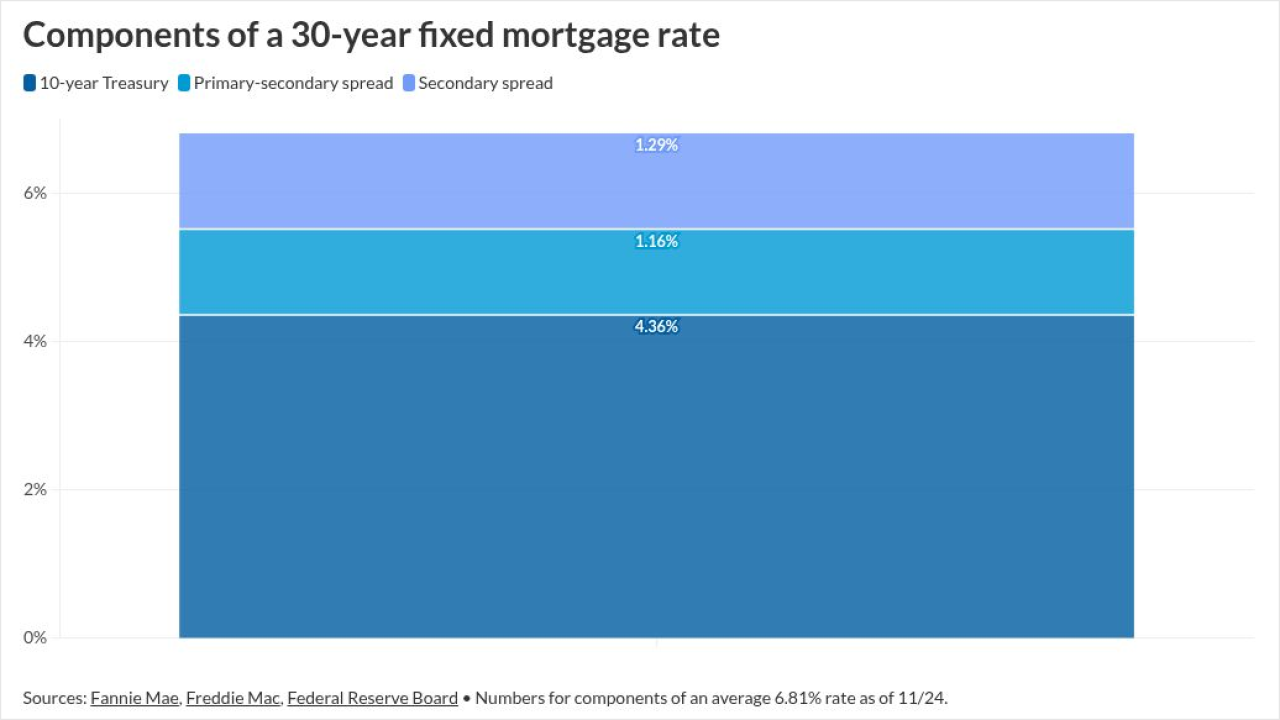The collateralized loan obligation industry fought risk retention tooth and nail, claiming it was unjustly applied to those who purchase, rather than underwrite, collateral for asset-backeds, overly burdensome to asset managers with little balance sheet of their own, and would raise borrowing costs for below-investment-grade companies.
Nevertheless, the CLO industry adapted.
Since late 2014, when the rules were issued, smaller managers have teamed up with larger players and collectively raised billions of dollars from third-party investors to help finance their skin in the game. Issuance of CLOs reached a near-record $124 billion in 2017, feeding a frenzy for floating-rate debt that has allowed junk-rated companies to borrow large sums on increasingly favorable terms.
That doesn’t make legal victory any less sweet.

On Friday, the Court of Appeals for the D.C. Circuit sided with the Loan Syndications and Trading Association, an industry trade group; it held that Dodd-Frank does not authorize federal agencies to subject CLO managers who acquire collateral for deals on the open market to risk retention regulation, because those managers are not “securitizers.”
To be a securitizer for purposes of Section 941 of the statute, the court concluded, “a party must actually be a transferor, relinquishing ownership or control of assets to an issuer” of the securitization notes.
As a result, the court reversed or vacated the portions of a district court decision that had initially upheld the agencies’ rule and remanded the case to the district court with instructions to vacate the rule insofar as it applies to open-market CLO managers.
The circuit court essentially “pooh-poohed the government position on a policy basis,” said LSTA General Counsel Elliot Ganz. “Even if there had been policy concerns that were substantive, we still have to follow what the words of the statute say.”
The decision is not immediately effective; the agencies that issued the rules — the Securities and Exchange Commission and the three primary banking regulators, the Federal Reserve, the Office of the Comptroller of the Currency and the Federal Deposit Insurance Corp. — have 45 days to decide whether to seek review before the full D.C. Circuit.
However, many think an appeal is unlikely under the current administration, particularly since the Treasury Department issued a report in October recommending that the rulemaking agencies introduce a broad exemption from risk retention for CLOs that meet certain standards.
Here are some of the implications.
There could be an immediate pause in new issuance
If the agencies decide not to seek review, then there are seven more days following the end of the 45-day period before a mandate is issued; at that point, “the decision is all but a formality,” said Richard Klinger, a partner at Sidley Austin, the law firm that represented the LSTA.
“The District Court doesn’t have to change anything, it simply vacates the rules with respect to open-market CLO managers,” he said. There are no hearings, no briefings, nothing for the agencies to do.
That means managers currently marketing deals or preparing to launch them now have to decide whether to go ahead as planned, retaining a stake in their deals, or hold off in the hopes that the circuit court’s decision becomes effective shortly. And there is certainly pressure on the agencies to show their hand sooner, rather than later, participants say, if only to avoid a market disruption.
Deborah Festa, a partner at Milbank, Tweed, Hadley & McCloy, says that CLO managers will want to avoid taking on a risk retention stake if they don’t have to. “There’s nothing stopping a deal in the market now from pricing, but until we see some certainty or finality around this decision … there could be a pause,” she said.
Others disagree. “Yields on debt are so attractive, managers will be worried that if they put a deal on hold, it’s going to end up costing them a lot more,” said Paul St. Lawrence, a partner at Cleary Gottlieb.
But he added, “I suspect deals currently in the market are going to modify their disclosures to make sure investor understand this ruling, and that [the managers] may not be required to hold on to the risk retention stakes.”
The playing field will be more level
Once the decision takes effect, not only will new issuance pick up, there is also likely to be more competition among managers because it will be easier for smaller CLO managers to put deals together.
“It’s going to level the playing field,” Festa said. “You’re going to start to see a lot of smaller managers who never lined up significant capital for risk retention come into market for first time in a while. The removal of barriers to entry will create more competition for larger managers.”
This competition should benefit CLO investors. “Anytime there’s an artificial reason for a market contraction, it can have a negative impact,” St. Lawrence said. “With fewer managers, you have less diversity in deal terms, and less competition among managers to figure out the best way to put deals together.”
David Preston, an analyst at Wells Fargo, says the pace of refinancing of existing deals will also speed up.
CLOs can typically reissue or reprice notes after an initial, non-call period, compelling investors to accept yields more in line with prevailing market rates. But for now, refinancing can trigger compliance for deals grandfathered from risk retention. So CLO managers must weigh the benefit of lowering their debt servicing costs against the cost of taking stakes in deals.
If CLOs are no longer subject to risk retention rules, managers will no longer have to decide between allocating risk retention capital to existing deals or new issues, Preston wrote in a report published Friday.
CLO managers may pull their skin out of the game
Vacating risk retention rules won’t just allow managers to issue new deals without retaining stakes; they may also be able to stop holding skin in the game of existing deals. Their ability to do so could depend on the wording of deal documents, however.
And even if deal documents do not compel a manager to retain a stake in a deal, the manager still might have to contend with a perception on the part of investors that their interests will remain aligned, Festa said.
Another reason there is unlikely to be a flood of the CLO “equity” typically held by managers: Their third-party investors may want to stay put. “Remember, a lot of the retention interest purchases were made by funds that managers have some interest in; in many cases a large portion of [funds], if not the majority, come from third-party investors who all have their own investment mandates,” St. Lawrence said.
“It could be an interesting result where the rule essentially created this market" for risk retention, "and once the rule goes away, it continues to function.”
Not all CLOs will benefit
The circuit court’s decision only applies to open-market CLOs; it clearly excludes what are known as middle market CLOs, which lenders to small and midsize companies use to securitize loans they have underwritten and hold on their own books.
CLOs structured to comply with both U.S. and European Union risk retention rules are more of a gray area, however. “It’s possible that the way that [U.S.] managers comply with EU risk retention rules might not qualify as open-market CLOs,” Festa said. In order to meet what’s known as the originator method of complying with EU rules, some managers or their affiliates acquire loans and hold them for a period before transferring them to the CLO. “Deals structured that way arguably might not qualify as open-market CLOs,” she said.
Preston thinks that a repeal of U.S. risk retention requirement for U.S. CLOs would likely discourage managers from structuring deals that comply with EU risk retention, limiting European investors' options for investing in U.S. CLOs.




